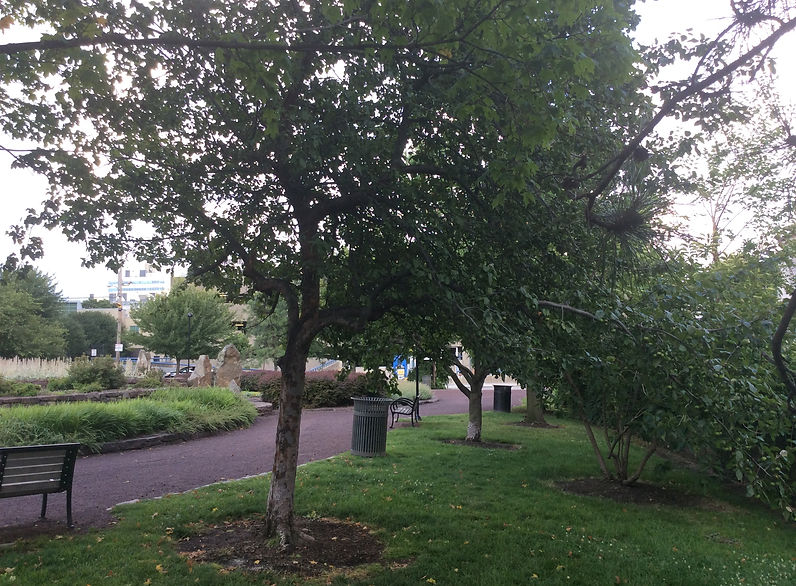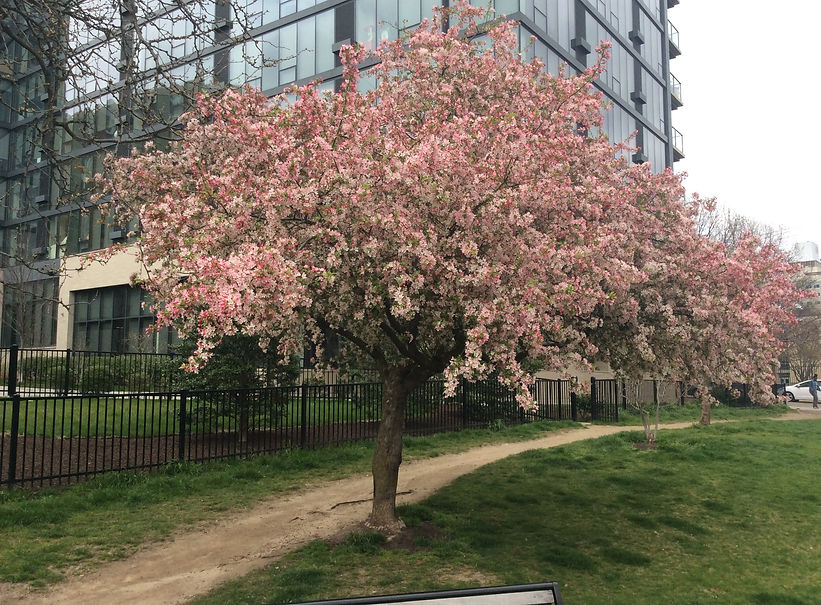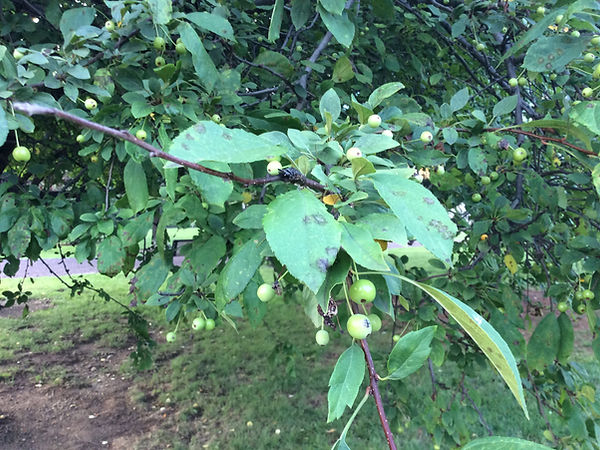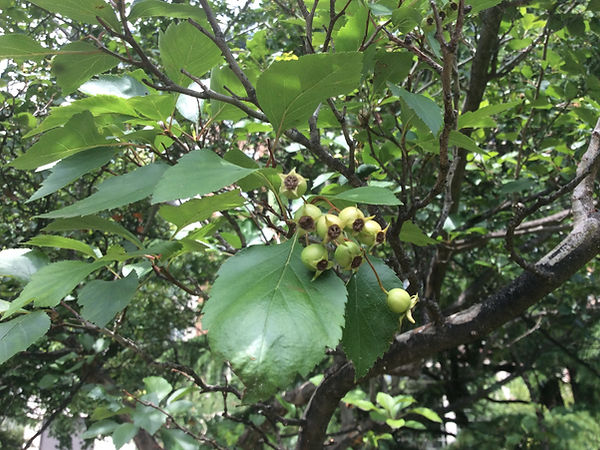top of page
Crabapple
Malus spp.
There are at least three different cultivars of crabapple in the Park, but since members of the genus Malus hybridize fairly freely, I am going to lump all the cultivars together for this page. See Wikipedia entry here for the genus.
Crabapples are widely grown as ornamentals for their beautiful flowers and for resistance to disease. They are used as root stocks for grafted domestic apples to add beneficial characteristics. They are also used as pollenizers in apple orchards.

Centurion crab in the east triangle in April, looking northeast.
Crabapple factoids:
-
The genus Malus contains 30-55 species, all of which are "apples." One of those cultivated species, Malus domesticus, with its 7,500 known varieties, is the commercial apple. This is analogous to the origins of our pet dogs, Canis lupus familiaris, and all its separate breeds engineered by humans, from the wild wolf, Canis lupus.
-
Most crabapples have a bitter taste, due to the chemical malic acid. This chemical name is derived from the Latin word malum, meaning evil. This has nothing to do with the Bible, as the forbidden fruit in the story of Adam and Eve is never specified. The Latin word for apple, malum, is pronounced with a long "a" and derives from the Greek word for melon.
-
The leaves are serrated like the cherry tree, and the small crabapples can look like cherries in July. The bark distinguishes the two, since cherry has smooth purplish bark with lenticels, and crabs have thick bark with longitudinal furrows.
-
Many apple experts will define an apple as having a diameter of at least two inches. Anything less than that diameter is a crabapple.

Nicely shaped gold harvest crabapple in the southwest triangle in April, looking east

Brandywine crabapple already burdened with fruit in the southeast triangle, in July, facing east

Centurion crabapple in the northeast triangle in April, facing north

Crabapple (Malus 'Purple Prince') on 19th Street, planted in the fall of 2021, blooming for the first time in our neighborhood in April of 2022.
Botany 101 Bonus
There are many ways to differentiate one tree from another as far as identification. Most identification trees start with broadleaf (for example, a maple or oak) versus needled tree (like a white pine). Some trees have single leaves (redbud) and some have leaves that come in groups (compound leaves like the honeylocust). Some trees have distinctively shaped leaves (like the tulip trees just beyond the fence in the northwest section of the Park) or a waxy texture (magnolia). Some trees have distinctive flowers in spring (redbud, dogwood). In addition, the timing of flowering can be helpful, since some are very early flowering (red maple, purple leaf plum). Some trees have distinctive fruit in autumn (hawthorn, sweetgum, golden rain tree, and the Japanese pagoda tree).
Another way, especially in winter, is by the bark. There are at least three different species in the Park that can be confused with each other, since they all have profuse flowers in the spring; two have small cherry-like fruit; and they all have oblate green leaves with serrated edges. They can be easily distinguished by the bark.


Crabapple with cherry-like fruit and serrated leaves in July. The bark is thick and furrowed longitudinally when mature.


Thornless hawthorn with haws and leaves with serrated edges in July. The bark is thin and peeling giving an army desert camouflage appearance.

The ornamental cherries in the Park have serrated leaves and distinctive smooth purple bark with lenticels (horizontal pores). You can't help but reach out and feel the bark on a cherry tree. The cherry trees in our Park do not bear any fruit.
bottom of page


